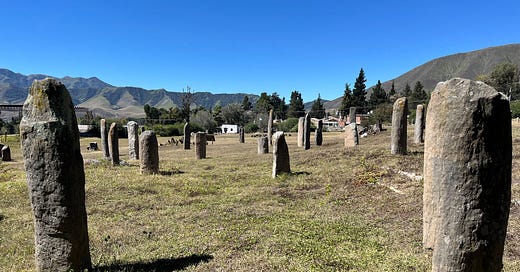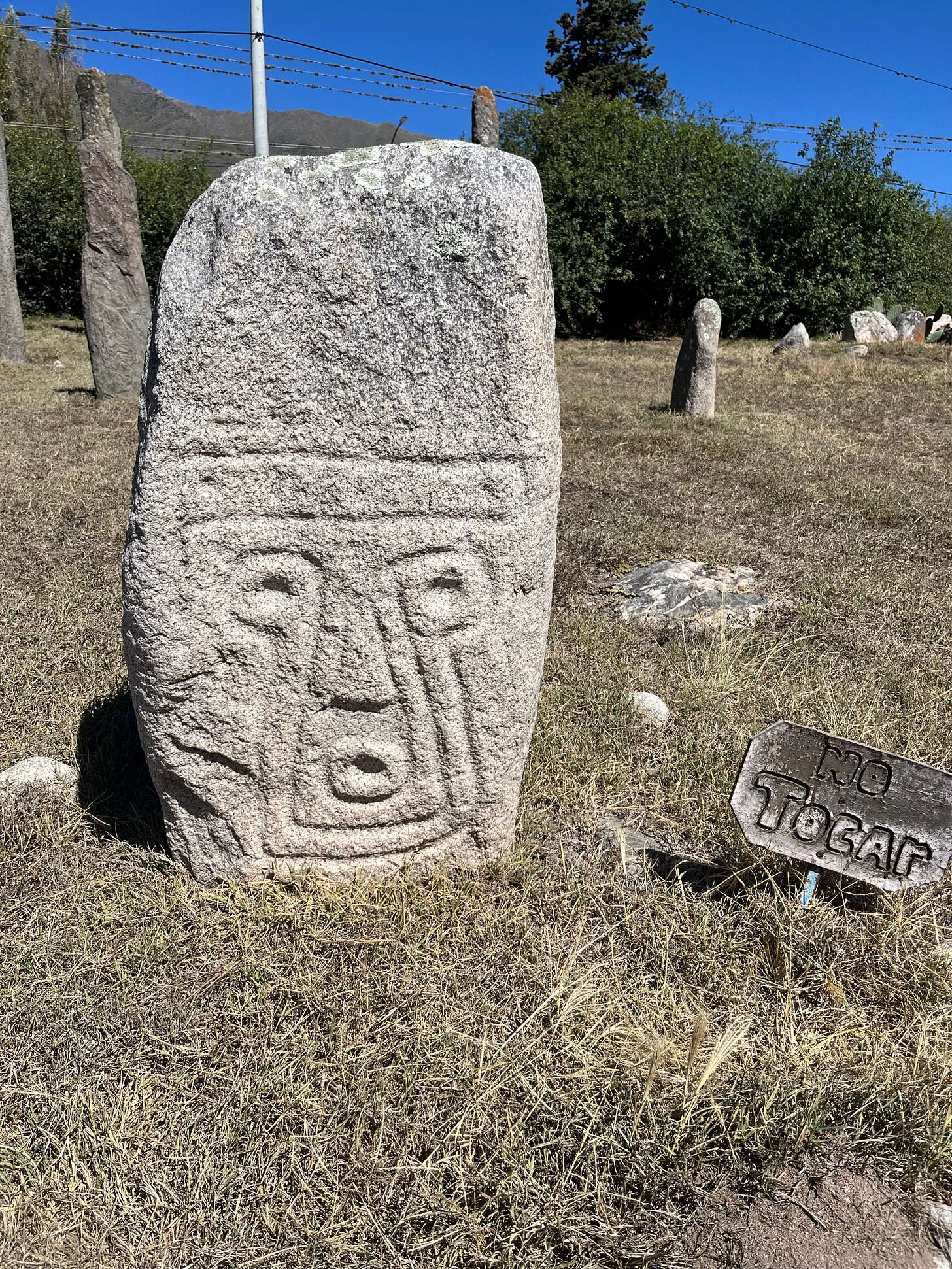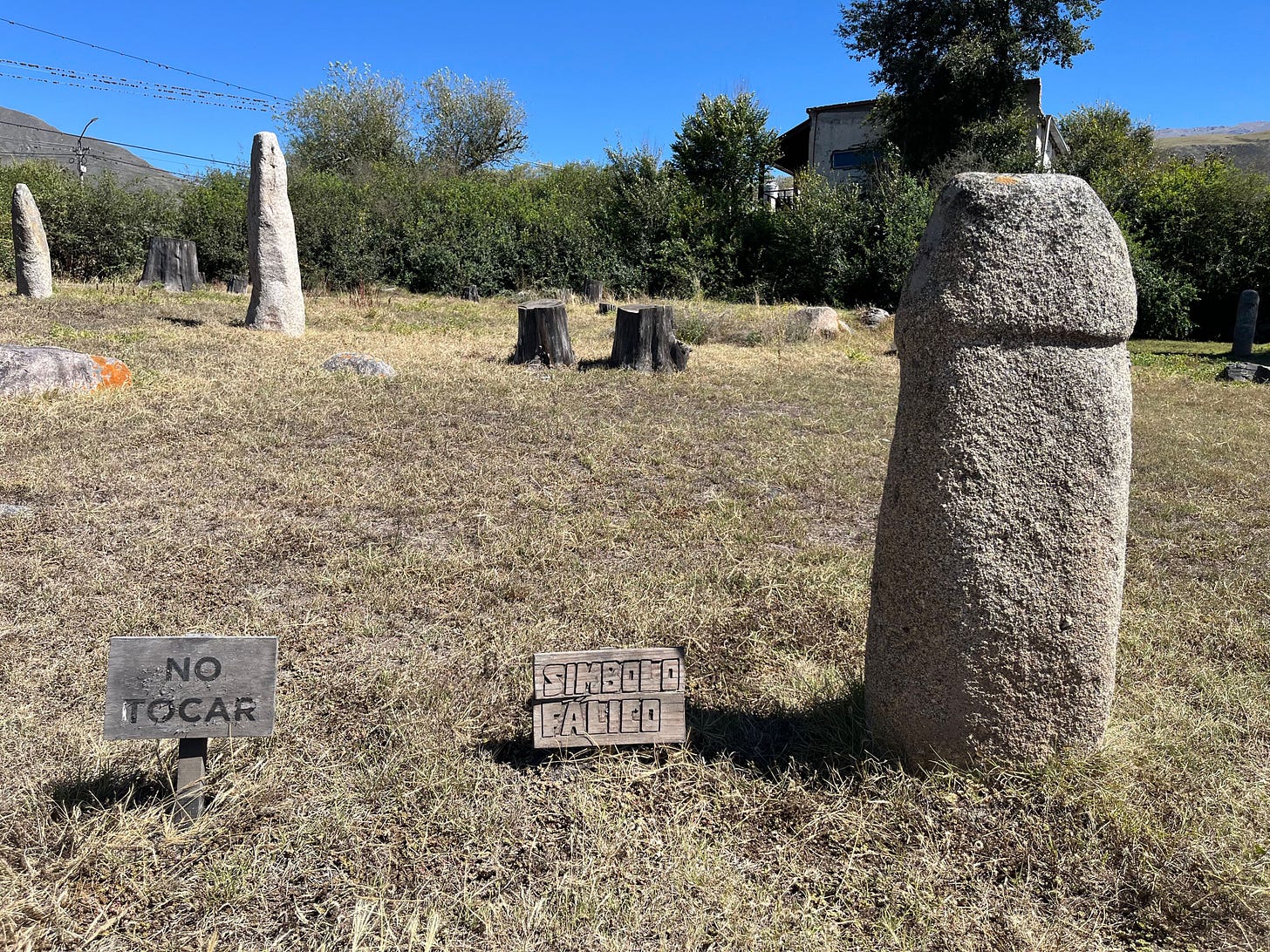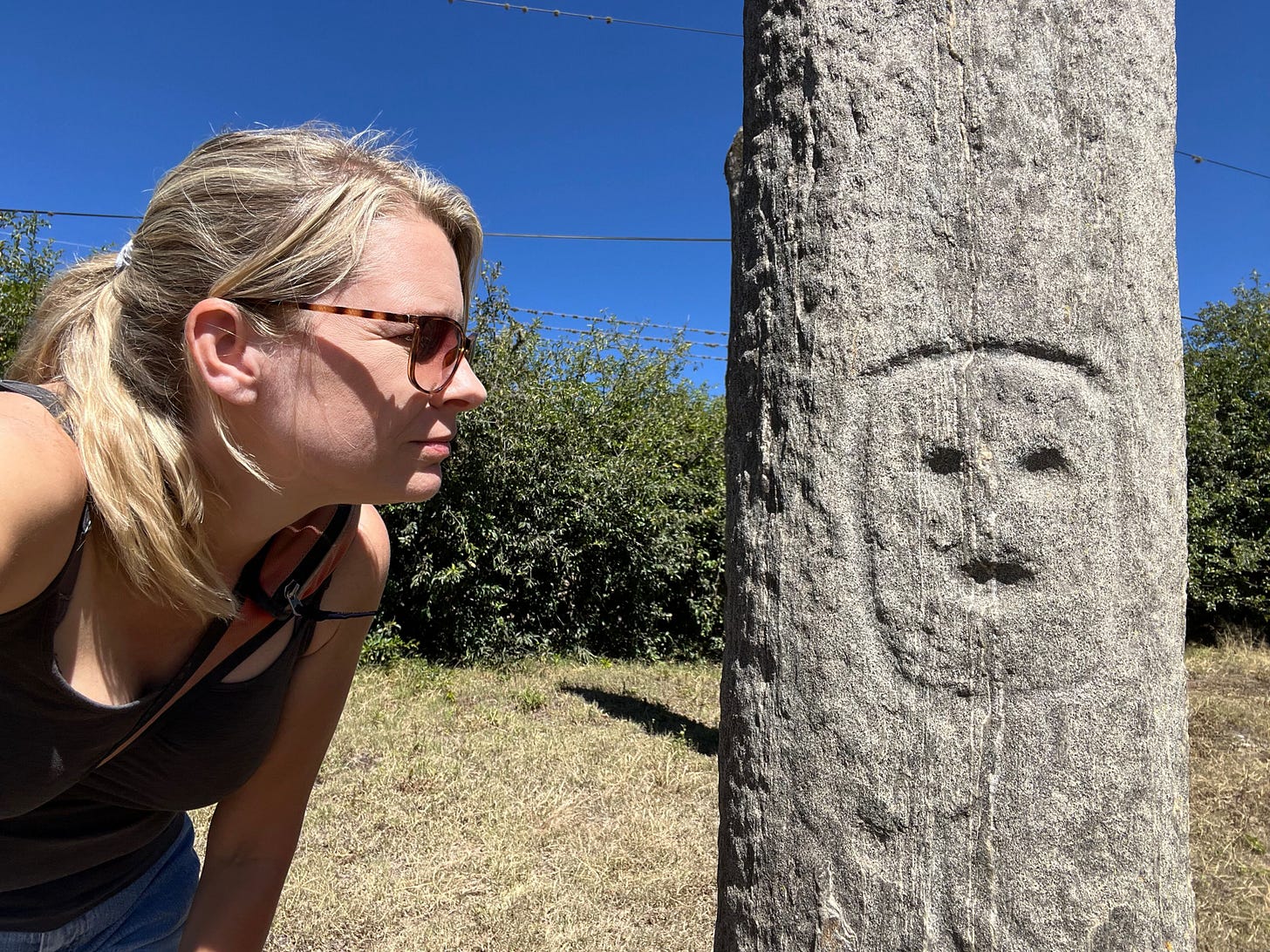The town of El Mollar, in the northwest of Argentina, was hot and dry, even in late autumn. I rolled through the dusty streets, past unemployed donkeys loitering on the sidewalks, and parked in front of a small, squat building next to a gate. The hand-painted sign hanging from the arch read “Reserva Arqueologica de Los Menhires.”
Inside the entrance I checked in with the rangers inside the building. Admission is free and they waived me through, too hot and lethargic to show any interest. The reserve is an open-air museum with a large grassy field which holds around 150 standing stones. The Stonehenge of Argentina.
The monoliths are relics of the Tafi culture, a group which inhabited this region of Argentina from around 500 BCE to 800 CE. The stones are called menhires (singular: menhir), a word of Celtic origin meaning “long stone”, or huacas, a Quechua word that refers to something sacred to the ancestors. No one, apparently, knows what word the original creators might have used to describe them. The Tafi culture flourished during a time when societies in the region began transitioning from nomadic lifestyles to settled agricultural communities. They left little details of their culture aside from a couple hundred carved granite monuments scattered around the valley.
Inside I wandered around and among the stones, stopping to parse out the infoboards dotting the landscape. With my basic Spanish and the occasional help from Google translate on a big word, I was able to parse out most of the knowledge the signs were trying to impart. Here’s what I learned:
The menhires were carved from local stone, mostly granite, using techniques of chipping, abrasion, grinding, and polishing. They display various anthropomorphic motifs, zoomorphic figures, and phallic shapes; a few show simpler geometric forms. They were moved from various sites across the valley to this reserve in the 1970s to better preserve and study them. Their original placement context links them to ceremonial centers as well as domestic spaces, livestock corrals, and cultivated fields. In general, their creation is associated with rituals and practices related to ancestry, the fertility of the land and animals, and the provision of goods.
The stones vary in size, with the tallest reaching a height of around 3 meters (~10 ft) and weighing around 4 tons. Most were slightly taller than me, a few were shorter. Some were small boulders arranged in groups on the ground. Some had been placed in circles but most appeared to be scattered more or less haphazardly across the field. Again, these orientations were unrelated to their original placements in the valley as they had been moved to this park without much guidance some fifty years ago.
I spent an hour or two studying the menhires and only saw a couple other people there the whole time. This seems to be a forgotten area of Argentina, though it was well worth the detour. Unlike the megaliths of Stonehenge, you can walk right up to these and interact with them. Some had human features carved in relief, looking as though a person was trapped inside the rock. One had two columns of holes drilled down the front, which was interpreted by archaeologists as the mammary chain of a cat. There were a few obvious phalluses, and plenty of others that could have passed if you squinted. Many of the stones had worn down so that the engravings weren’t obvious at all.
It was a fascinating place, although the heat seemed to bake some of the mystery out of the landscape. When I finished I waved to the guards, still languishing in their small office at the entrance, and got back on the road to seek my next adventure.








Fascinating reading!
You gotta love those nonobvious phalluses. Also, how much of the enjoyment of the experience is owed to it being remote, not crowded, etc.? Seems like you did a great job on your travels finding these out-of-the-way gems